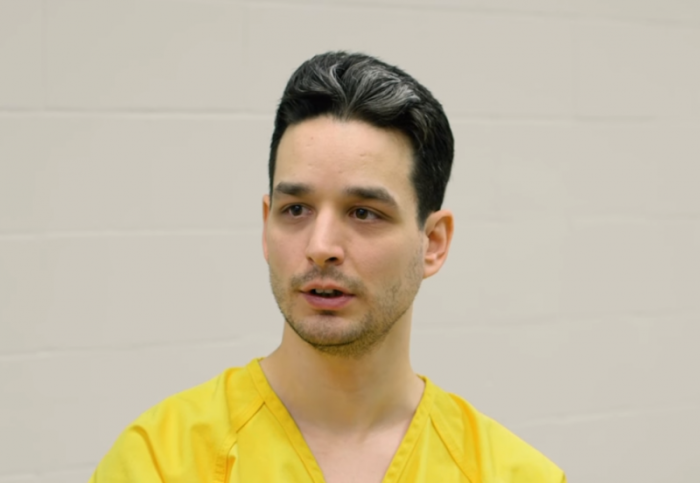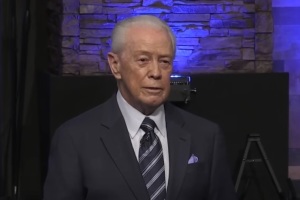3 Kinds of School Shooters: How Parents and Teachers Can Help

Read part 1, part 2, part 3, part 4, part 5, part 6 and part 7 of The Christian Post's series on youth and school violence.
Nikolas Cruz, the 19-year-old who was charged with the premeditated murder of 17 people at Marjory Stoneman Douglas High School in Parkland, Florida, in February, was troubled.
His attorneys have painted him as "a broken child" who struggled with chronic mental illness and depression. They have also pointed to his chaotic family life which was made worse by the death of his adoptive mother, Lynda Cruz, in November 2017.
As many have sought to find an explanation for the conditions that give rise to school shooters, mental health experts agree that family dysfunction is one factor in the tide that leads them to strike like the "perfect storm." But even so, there is not one type of family situation that would lead to the making of a school gunman.
"The dynamics of a school shooter is extremely complex. It's like the meeting of a perfect storm," said Daniel Huerta, vice president of the Parenting and Youth department at Focus on the Family, who is also a licensed clinical social worker.
"It's not necessarily the exact same family pattern where you can say, 'well, these families did this and so they developed and raised a school shooter.' Some of the families are described as just average," he noted.
Three Kinds of School Shooters
Peter Langman is a sought-after expert on the psychology of school shooters. His latest book, School Shooters: Understanding High School, College, and Adult Perpetrators, was published in January 2015. He also wrote Why Kids Kill: Inside the Minds of School Shooters.
"First thing I need to say is that there is no one cause of school shootings. In some cases, the families are part of the problem. But even having a dysfunctional family by itself doesn't cause someone to commit mass murder. I think too often people are looking for the one thing that they can blame it on and there's never just one thing," he said in an interview with The Christian Post the day an armed student shot two others at Great Mills High School in Maryland last month.
He explained that there are three types of school shooters:
- the psychopathic
- the psychotic
- the traumatized
Psychopathic and psychotic school shooters generally come from "more or less stable, middle class, intact families," he said.
Cho Seung-Hui

In Rampage School Shooters: A Typology, Langman classifies Seung-Hui Cho as psychotic.
Cho was 23 in 2007 when he, armed with two semi-automatic pistols, killed 32 people and wounded 17 others on April 16, 2007, at Virginia Polytechnic Institute and State University in Blacksburg, Virginia, before killing himself.
Sung Tae and Hyang Im Cho, Cho's parents, according to The Washington Post, worked their way up from a dank basement apartment in Seoul, South Korea, to an upper-middle-class neighborhood in Fairfax County, Virginia. They immigrated when Seung-Hui was just 8 years old and they worked six days a week as dry cleaners to provide the family with a comfortable life. Their son, however, did not adjust well and exhibited signs of mental illness, which they tried and failed to regulate with professional help.
"From a young age, he was markedly anxious in social situations. He spoke little, even within his family. Despite this, he was an intelligent child who behaved well in school. During his years at college, his behavior was notable for negative symptoms of schizophrenia, including poverty of speech and affective flattening," Langman explained.
Along with barely speaking, Cho also showed almost no emotion of any kind.
"When he did speak, he sometimes said things that suggested delusional thinking (Kleinfield, 2007). He talked about having a supermodel from outer space as a girlfriend. Though he initially referred to her as imaginary, on at least one occasion he told his roommate that she was in their dorm room. Whether this was psychotic or an attempt at humor remains unclear," Langman wrote.
Eric Harris

On April 20, 1999, Eric Harris, 18, and his friend, Dylan Klebold, killed 13 people and wounded 24 others armed with firearms and knives at Columbine High School in Columbine, Colorado.
Langman classifies Harris as a psychopathic school shooter because of his combination of narcissism, sadism, impression management, delight in deception, and rejection of morality and law.
Despite coming from an "intact, well-functioning family," it wasn't enough to counter his psychopathic tendencies.
"Psychopaths do not recognize laws or morality as constraints on their behavior. Eric wrote repeatedly in his journal about his rejection of traditional values. He stated, 'Morals is just another word,'" Langman noted.
"Elsewhere he wrote, 'There's no such thing as True Good or True evil' (JCSO, 1999, p. 26,010). His refusal to acknowledge morality made it easy for him to violate social norms and laws. Prior to the attack, Eric broke many laws.
"... Eric's disregard for social norms was manifest long before the attack. Eric was grandiose. He wrote 'Ich bin Gott,' which is German for 'I am God,' in his school planner and the yearbooks of his friends."
Evan Ramsey

While the above-mentioned two groups of school shooters might experience divorce in the home, "divorce is not [considered a] severe dysfunction," Langman noted.
School shooters, like Evan Ramsey, who fall in the traumatized category, however, tend to reflect severe patterns of family dysfunction.
In 1997, when he was 16, Ramsey, walked into Bethel Regional High School in Alaska and shot two of his classmates with a 12-gauge shotgun just so he could "get people to leave me alone."
A report compiled by Langman describes Ramsey's family life as "highly unstable." In an interview with the Anchorage Daily News published in February 2017, Ramsey described his childhood as "fairly abusive," one that saw him moving to different foster homes. His mother was a binge drinker, while his first foster father would beat him with a bungee cord.
He also struggled with bullying while at school and said he shared his struggle with his foster mother at the time of the shooting. She had been good to him. He said she told him to "do the mature and adult thing and report all incidents of bullying to the principal."
He did.
When that advice didn't work, Ramsey said: "I decided I needed to do something to stand up for myself. I chose to kill."
"When you get to the families of the traumatized school shooter, that is where you see the profound family impact on children. And when I talk about the traumatized school shooters, I'm looking at several facets of their family history," Langman said. "In perhaps every case of a traumatized school shooter, certainly the vast majority of them, there is at least one parent with a drug or alcohol problem. Sometimes it's both parents."
In unpacking other factors that help create a dysfunctional family environment for school shooters, he pointed to other issues such as domestic violence and sexual abuse.
"There is sometimes domestic violence between the father and the mother. There is emotional and physical abuse of the child. Sometimes there is criminal behavior on the part of one or both parents. Occasionally, it's significant enough that they have served time in jail [though] not always," Langman said.
"There is sometimes sexual abuse of the child [but] not necessarily within the home. It could be within the home [but] sometimes it's outside the home. It could be someone in the neighborhood. It could be someone in the foster home that these kids end up in because their families were dysfunctional. And for some of the families, because there's a lot of dysfunction and fragmentation, the kids are always bouncing from one home to another," he said.
Langman explained that in a study he conducted of 48 school shooters, he classified 24 of them as "secondary school shooters." This means they "committed the attacks in middle school or high school." He found that most of these school shooters came from a traumatized family background.
"Of that 24, the greatest number, 42 percent of them were traumatized, with only 29 percent psychotic and 29 percent psychopathic. So at that level when you're talking about the secondary school shooters, the traumatized in this one study were the most common," Langman pointed out.
In an assessment of 13 cases of college shooters, Langman explained that "none of them were traumatized" and attributed the difference to socioeconomic status.
"Another factor with the traumatized shooter is that any family can have severe dysfunction at any level of the socioeconomic spectrum. However, the traumatized school shooters tend to come from the lower end of the spectrum, financially speaking," he said. "Between the family dysfunction, and the lack of financial resources ... these kids don't end up going to college or their lives are so bad, if they reach a breaking point, they reach it in their teens before they even end up in higher education."
How Parents Can Help
Parents, he said, can help prevent their children from becoming school shooters by educating themselves about mental health issues and getting the right treatment when needed. Paying attention to the warning signs that can give rise to shooters is also important.
"Being educated about the warning signs of school shooters just in case either your children exhibit those warning signs or they come home talking about friends of theirs or kids at school. Then the parents know what to look out for or how to take a comment seriously," Langman noted.
He further pointed out the need for parents to monitor the activities of their children on social media, as sometimes it might be helpful in detecting problems they miss in the home.
"I think the major thing that's different today than when I was going to school is the internet and social media. I think it's a good idea for parents to have some knowledge about the internet and social media and what their kids are doing in these domains," said Langman. "That might also help them catch problems before they get too bad. Not just the potential school shooting but there's all kinds of other things that might allow them to keep their fingers on the pulse of what's happening to their children."
Langman noted that room searches are another tactic parents can pursue if they sense something is amiss with their children.
Huerta of Focus on the Family stressed the importance of also monitoring the kinds of media children are exposed to, especially when a child has a diagnosed mental health issue.
"[As far as] the media and the exposure to tremendously graphic violence, what we're discovering in neuroscience [is] that we have mirror neurons and our brain literally thinks it's in the screen. Even though we know consciously that we're not, our subconscious perceives as if it's participating and it's ... practicing what it's watching," Huerta said. "... Your brain is having this dual type of experience without you facing danger, and so I really believe it desensitizes a person to life — not necessarily to violence but just the respect of life, and that's a fine line."
Huerta also urged parents who have children with mental health issues not to be afraid to get help — even if Christian beliefs make you hesitant to get treatment, particularly when drugs are involved.
"If there is mental illness, if there is a lot of conflict in the home, I would say don't be afraid to get counseling and to dig deep into what is really going on," said Huerta.
"In Christian homes, I think we have to be really intentional about entering difficult conversations with our kids about what it means to be a Christian, what are the beliefs within our homes, why do we believe what we believe. Those aren't threatening conversations. Those are very important. And really grappling with what it means to have faith in something and then modeling that. Do I really live as if God is real?"
Working With Schools
Some schools have mental health and other screening processes designed to help the school community better serve students. Langman urged parents to support these initiatives as sometimes problems can be caught and treated through these assessments. Schools, he said, could also do a better job implementing these screenings.
"I think schools can do more to implement what's called threat assessments. I think schools all over the country have done a good job in training people in lock-down procedures ... but those are things we do in response to a shooting, not to prevent a shooting. The best way to prevent a shooting is for people to know the warning signs and report them and have a team in place within the school to investigate those threats," Langman said.
He further noted that that while news coverage has skewed the perception of the magnitude of school shootings as a problem, school is still perhaps the safest place children can be. He pointed out that children are killed far more often in their own homes and traffic accidents than in school shootings.
For more information on school shooters, visit schoolshooters.info.




























